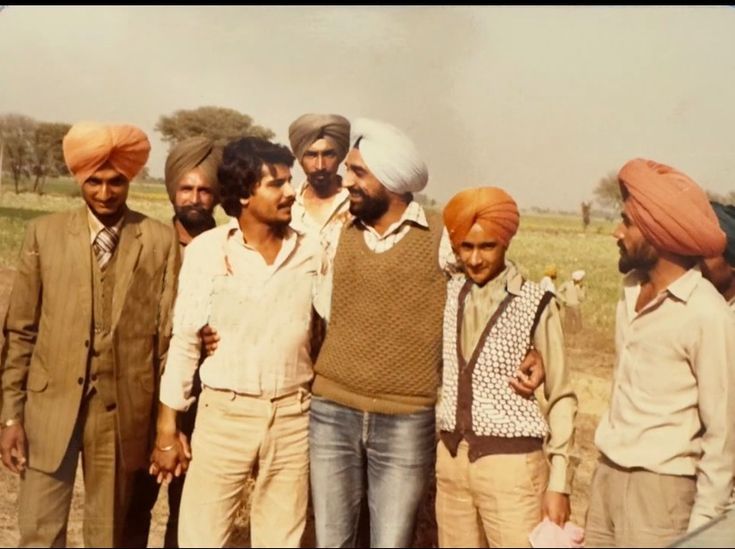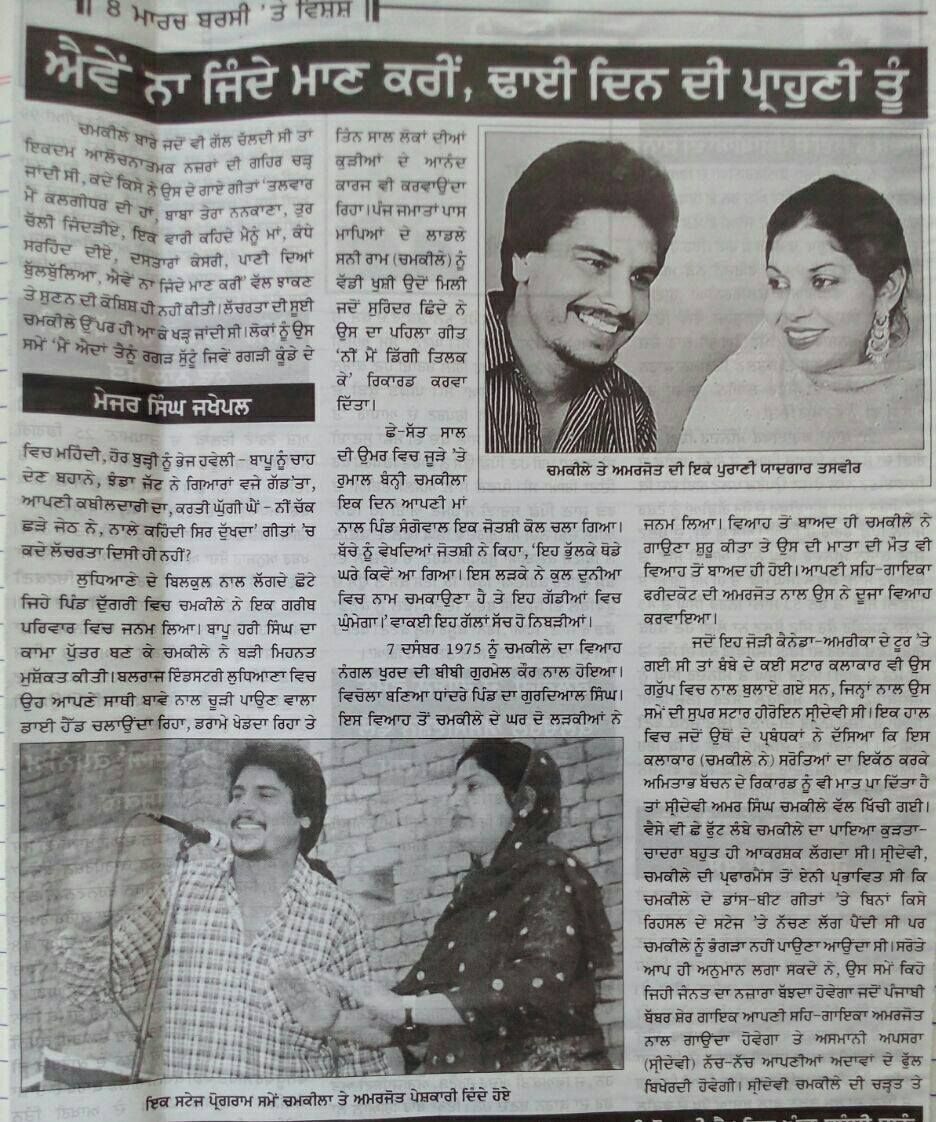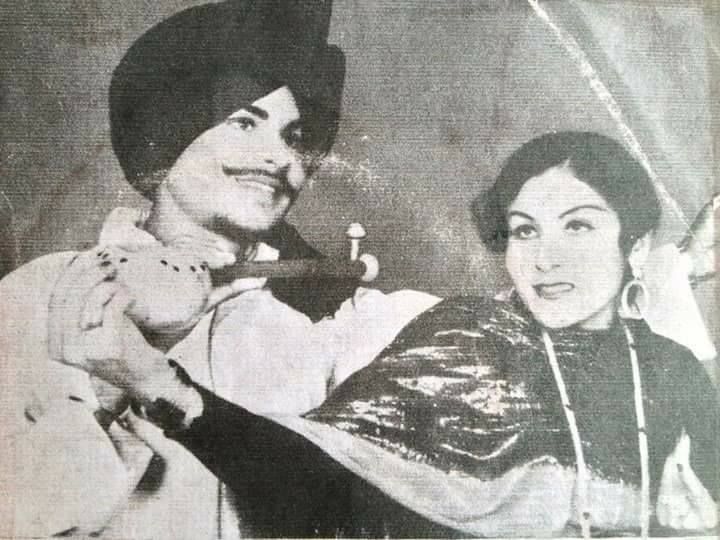Amar Singh Hatyakand
Introduction
One voice once dominated all loudspeakers in Punjab’s colorful fields, where music is as abundant as mustard flowers. His name was Amar Singh Chamkila. He sang with a fierce, unapologetic, and earthy tone that spoke directly to the hearts of Punjabis. That voice was silenced forever on a fatal afternoon in 1988. The world still asks: how did Amar Singh Chamkila die? The Amar Singh Chamkila Hatyakand—the murder of Amar Singh Chamkila and his wife Amarjot Kaur—remains one of India’s most shocking and unsolved mysteries. It is a tale of fame, rivalry, scandal, and more questions than answers.
The Punjab Rebel Singer
Amar Singh Chamkila, born Dhanni Ram on 21 July 1960 in Dugri village near Ludhiana, came from a humble Dalit family. Life was not easy—he worked in a cloth mill, sold records, and played the harmonium at local weddings. Beneath that simplicity burned a creative fire that would redefine Punjabi music forever.
Chamkila drew inspiration from legends like Surinder Shinda and Kuldeep Manak. It was Shinda who first recognized his raw gift. Under his guidance, Chamkila soon formed his own band. Within a few years, his voice reached every corner of Punjab. His songs—like “Pehla Viah Na Karona Lal Pari Naal,” now a cultural classic—spoke about real life, love, and hypocrisy.
Unlike polished studio singers, Chamkila sang of extramarital affairs, drinking, and social double standards—subjects considered taboo at the time. His truth-telling lyrics, though criticized as “vulgar,” reflected the unfiltered emotions of rural Punjab. His music was the voice of the people.
Voice That Spoke the Truth
Chamkila’s music was more than entertainment—it was commentary. Through his songs, he questioned social norms, injustice, and hypocrisy. For some, he was a revolutionary; for others, a troublemaker.
This fearless honesty invited enemies. In the 1980s, Punjab was a turbulent land, shaken by militancy and political unrest. Extremists saw Chamkila’s songs as immoral, while the youth saw him as a mirror of their struggles. His concerts were massive, and his cassettes sold by the millions. He became the “Elvis of Punjab.”
Together with his singing partner—and later his wife—Amarjot Kaur, he created an unmatched stage chemistry. The duo, Amar Singh Chamkila and Amarjot Kaur, became household names. Their joint tracks, including many Amar Singh Chamkila MP3 songs, still circulate across YouTube and music apps. Their partnership was the heartbeat of Punjabi folk culture.
Punjab in the 1980s: The Unrest Behind the Music
To understand the Amar Singh Chamkila death reason, one must recall the Punjab of the 1980s. It was the height of the Khalistan movement, and every public performance was under scrutiny. Artists were accused of promoting immorality, while others saw them as voices of rebellion.
Chamkila’s unfiltered songs about love, women, and social hypocrisy angered militant factions. Rumors spread that he had been threatened multiple times to stop singing such “obscene” songs or leave Punjab altogether. But Chamkila refused to bend.
8 March 1988: The Fatal Day
On 8 March 1988, Chamkila, Amarjot, and two band members were on their way to perform in Mehsampur village near Jalandhar. As their Maruti van reached the venue, a group of motorcycle-borne gunmen opened fire. Within moments, Amar Singh Chamkila died, along with his wife Amarjot Kaur and their team.
The attackers vanished before anyone could see their faces clearly. It was daylight, witnesses existed, yet no arrests were ever made. Amar Singh Chamkila death photos circulated in local papers, shocking the entire state. The Punjab Police started an investigation but soon, the case went cold. Even decades later, the Amar Singh Chamkila death reason officially remains “unknown.”
Theories and Suspicions
-
Militant Involvement: The most accepted theory blames militant groups who considered his songs “corrupting.”
-
Professional Rivalry: Chamkila’s massive fame and cassette sales had created jealousy in the music circuit. Rivals saw him as a threat.
-
Personal Vendetta: Some suggest Chamkila’s lyrics referred to real people or local incidents, leading to personal enmity.
Even Surinder Sonia Amar Singh Chamkila, one of his former stage partners, later recalled how Chamkila had received repeated threats to change his musical themes—but he refused.
Silence and Legacy
Despite his tragic end, Amar Singh Chamkila’s history lives on. Fans still search online for Amar Singh Chamkila photo, songs, and performances. In recent years, documentaries and tribute concerts have revived his legacy, including the Netflix film “Amar Singh Chamkila” (2024) by Imtiaz Ali, starring Diljit Dosanjh and Parineeti Chopra.
This movie reintroduced his story to a new generation and reignited curiosity about Amar Singh Chamkila history in Hindi. Modern Punjabi artists like Sidhu Moosewala, Gurdas Maan, and Diljit Dosanjh cite him as a fearless inspiration who turned pain into poetry.
Conclusion
The Amar Singh Chamkila Hatyakand is not just a murder mystery—it is a wound on Punjab’s cultural soul. From a cloth mill worker to a folk icon, Chamkila’s journey was extraordinary and heartbreaking. His killers were never found, but his voice still roams through every tumbi beat and every village loudspeaker.



